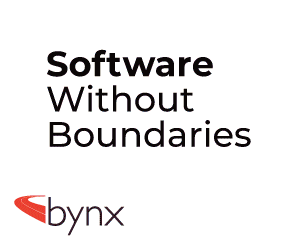
Fleet operators should not delay in putting robust plans in place to transition to electric vehicles or consider new mobility solutions, despite a series of unprecedented external factors such as increasing energy costs and uncertain new vehicle supply due to the global semiconductor shortage, according to Samuel Kellner-Steinmetz, the Chief Sales Officer of Fleet Logistics Group.
Kellner-Steinmetz says that, while it may be tempting to delay plans to go electric or introduce mobility options in such a volatile environment, legislative change means that the clock is steadily ticking. For example, EU legislation will continue to promote electrification, while air quality standards will get tougher over the next few years, meaning that delay is not an option.
The European Commission has just announced a requirement for a 60% Europe-wide cut in particulate matter from light commercial vehicles by 2030 under revisions to its ambient Air Quality Directives.
The new car market is under similar pressure with new diesel vehicle sales banned from 2035, while the EC aims to have 30 million plus EVs on Europe’s roads by the end of the decade.
Meanwhile, Plugin Hybrid Electric Vehicles (PHEVs) may well lose something of their attraction as the EU has decided to adopt new CO2 ratings based on real-world driving, rather than the assumption that the electric motor is used most of the time, meaning huge increases are in the pipeline – as much as five times the current levels. The new EU-wide ratings will apply in just 3-5 years’ time and may have a serious impact on PHEV sales.
At the same time as legislative pressures, rising energy costs across Europe, largely linked to Russia’s invasion of Ukraine and the resultant chaos in global energy markets, mean that fleets need to pay greater attention to managing charging costs and availability of infrastructure, be that home, office or public charging.
Fleet Logistics is now advocating that fleet operators instigate a thorough review of existing cost bases and adopt a flexible approach to tackling some of these issues, with clear-cut objectives and timelines in place.
Cost reviews need to focus on existing suppliers and developing supplier management. For example, the time may be right to move from a solus leasing supplier to a multi-bid approach through a panel of lenders to achieve better pricing and use matrix pricing to manage mileage and contract terms to achieve the optimum results. This gives added flexibility with the knowledge of pricing impact ahead of making changes.
This approach can be used to model a series of ‘what-if’ scenarios, such as bundling or unbundling fleet services from lease contracts, allowing fleets to alter contract lengths and see the impact on costs - a vital factor for those fleets that may have fallen behind in the EV transition.
Kellner-Steinmetz said: “Cost control and careful and accurate budgeting are vital at this time of great volatility in global markets. Fleets need to take time to review supply chains and scrutinise budgets now, setting up accurate forecasts to work with for the future. At the same time, ensuring that efficient and cost-effective partners are in place is key for any future success, especially around the movement to electrification.
“A good starting point is a complete review of current and previous year figures to assess the internal and external factors that have impacted budgets and document any cost assumptions. Identifying any
trends in expense fluctuations between years is an excellent start in determining a heat map for market and supply chain reviews. This is a focus with our clients.
“Fleet procurement faces unprecedented pressures at the moment as purchasing executives tackle massive disruption in an era of rapid change, often with reduced resources. And we are increasingly being asked to play a key role in the procurement and tender process,” he said.
The fundamentals of basing decisions on the total cost of ownership may remain consistent, but the challenge of sourcing and analysing high-quality data to make these decisions has never been more difficult, especially as the transition to electrification typically involves costs, such as RVs and SMR on new OEMs, that are in their infancy, says Kellner-Steinmetz.
To help fleets navigate a smooth and cost-effective transition to electric vehicles, Fleet Logistics has recently launched a new tool, E-Fleet Transition, to provide answers on a country-by-country basis.
The new solution aims to give operators a forecast of what it means to electrify their fleets, projecting total CO2 emissions and the return on investment in electrification and charging infrastructure up to 2030.
Kellner-Steinmetz said: “While it may be tempting to delay electrification plans at a time of rising costs in a volatile market, EU legislation will continue to promote electrification and mobility and to steer member states, their fleet operators and drivers down an electric route, despite lead time challenges and soaring energy costs.
“For an organisation to reach its required goals requires careful planning and roll-out to take advantage of any incentives that are available in markets and to ensure that data analytics are available to measure success. Each organisation has different operational requirements and, for many fleets, they are learning lessons as they go.
“We offer a holistic approach to electrification, and our consulting team has never been busier in helping reduce the complexity for clients by analysing the true costs of running ICE vehicles versus EVs, assessing the best OEM mix, and profiling drivers to identify those best placed to make an earlier transition than others within the organisation.
“While now may not seem like the ideal time to make the transition to electric, waiting and doing nothing is really not an option,” he added.


